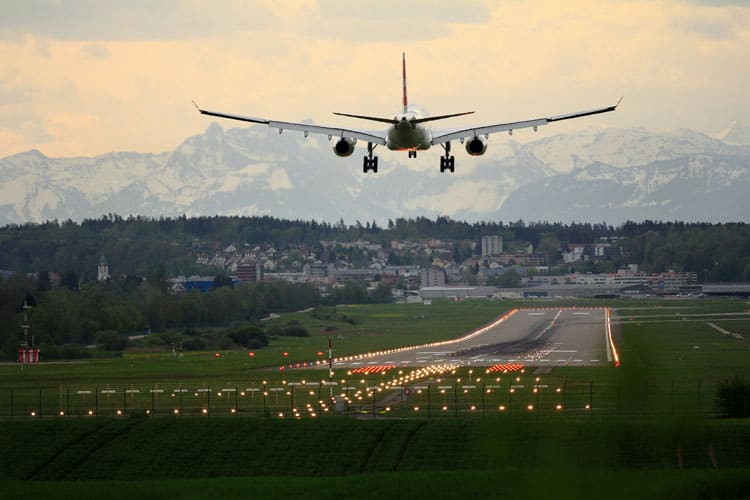
Editor’s Note: We share travel destinations, products and activities we recommend. If you make a purchase using a link on our site, we may earn a commission.
As the world went into lockdown and borders shut down in the blink of an eye, many people pondered when life would return back to normal. Intrepid travelers, on the other hand, also wondered when their favorite countries would open once again.
More than a year later, borders are reopening, flights are resuming their most popular routes, and travelers are making up for lost time by planning a summer full of trips. In fact, the European Union recently announced that all 27 member countries are opening up to Americans just in time for the tourist season.
However, as adventurers dive back into traveling, there are a handful of very important changes that come along with this “new normal.”

Namely, many European countries are asking travelers to undergo extra testing, provide proof of vaccinations, and adhere to new entry requirements for various establishments. Later in 2022, travelers will also need to have a visa waiver (such as the ETIAS Germany for Americans) if they wish to travel to Europe.
Although there are new rules and hurdles to pass through, this hasn’t stopped eager American travelers from booking a ticket and flying across the Atlantic.
For those who are planning to travel to Europe in the near future, this is what you need to know:

Each Country Has Their Own Requirements
As mentioned in the introduction, there are 27 member states of the European Union and, naturally, each country will have their own approach to reopening.
Some countries, such as Greece, allow all eligible travelers to enter as long as they have filled out a Passenger Locator Form and one of the following: a negative PCR test (taken up to 72 hours before arrival), proof of recovery from COVID-19, or proof of vaccination.
Other countries, however, are much more stringent when it comes to visitors. For instance, France only allows vaccinated travelers who can produce a negative test result, while those who are unvaccinated need to have a compelling reason and quarantine once they enter the country.
Due to these distinct differences, it is important to research which countries you plan to visit beforehand and plan accordingly.
Approved Vaccines
As news broke of the European Union reopening, president of the European Commission Ursula von der Leyen stated that, “All 27 member states will accept, unconditionally, all those who are vaccinated with vaccines that are approved by EMA.”
At the moment, the EMA-approved vaccines include Moderna, AstraZeneca, Pfizer/BioNTech, and Johnson & Johnson.
Von der Leyen continued, “The Americans, as far as I can see, use European Medicines Agency-approved vaccines.”
Although there are currently four approved vaccines, the European Medicines Agency is currently researching and trialing other vaccines that may soon join the list.

Vaccine Passports
One of the biggest developments in European tourism is the advent of vaccine passports.
These so-called ‘travel passes’ will be digital apps or QR codes that prove travelers and locals have been vaccinated, recovered from the coronavirus recently, or have proof of a negative test.
Many countries, including Australia, Japan, Denmark, and Poland, already have their own local version of COVID certificates, with many more following suit.
Some countries have even started to implement these digital passes. For example, France recently passed a mandate that required people to show their COVID health pass if they wish to enter a restaurant, nightclub, cafe, or take a long-distance train ride.
Tourism experts believe that vaccination passports will be the future of travel, as they save time during passport control, can quickly indicate a person’s COVID-19 status, and ensure seamless border crossings.
Travel to Non Europe Union Countries
Those who are unvaccinated (or simply want a change of scenery) could also look into the possibility of traveling to non-European Union countries, such as those in the Balkans or Eastern Europe.
The majority of these countries only require a negative test, and some (such as Albania) do not have any entry requirements at all.
Albania’s neighbor, Montenegro, has been making waves during the pandemic thanks to its lax entry rules, EU-like infrastructure, and comfortable conditions for digital nomads.
Turkey, a popular summertime destination, is also on many travelers’ radar this tourist season. It’s conveniently located between Europe and Asia, has a global airport hub (Istanbul International Airport), and can keep even the pickiest tourist busy for their entire trip.

Returning to the United States
Although nobody wants their vacation to end, we all need to go back home sooner or later.
When traveling during the pandemic, there are a few things to keep in mind when returning to the USA.
All air passengers must produce a negative test result (or documentation of recovery from COVID-19) before boarding their flight to the United States — including those who are fully vaccinated.
The Centers for Disease Control and Prevention (CDC) also recommends getting retested 3-5 days after international travel and self-quarantine for 7 days after travel.
- Life of a Champion: Exploring the Muhammad Ali Center in Louisville - April 19, 2024
- What It’s Like to Live as an Expat: Lake Chapala, Mexico - April 18, 2024
- Top 5 Spots for Stargazing in North Carolina - April 17, 2024

